Moon bridges form semicircles that reflect full circles in water. These structures originated in East Asia and combine function with design. The bridges stand in public gardens, botanical spaces and traditional landscapes from Japan to California.
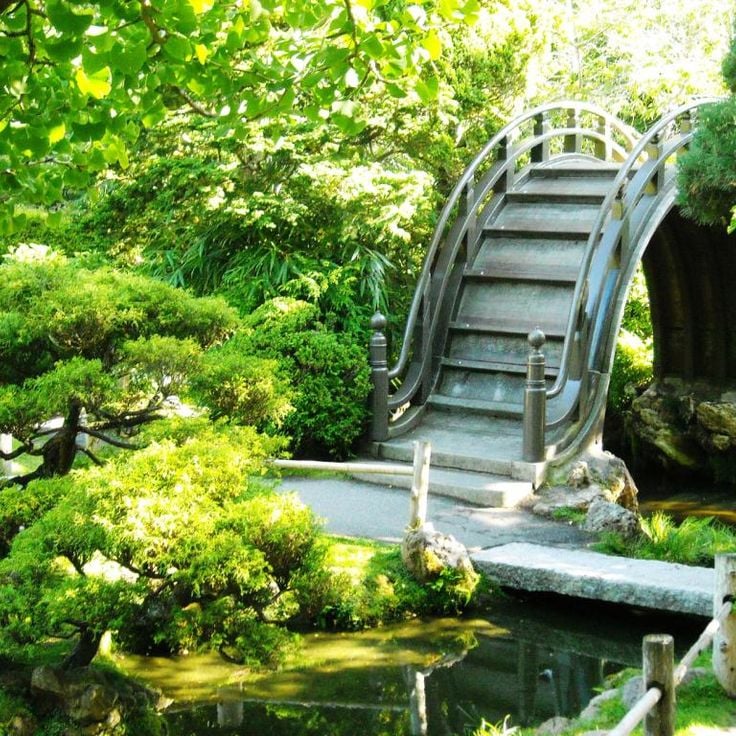
San Francisco, USA
The red wooden bridge in the Japanese Tea Garden follows traditional design with a steep arch.

Tokyo, Japan
The red bridge spans over a pond and is surrounded by blooming wisteria in spring.
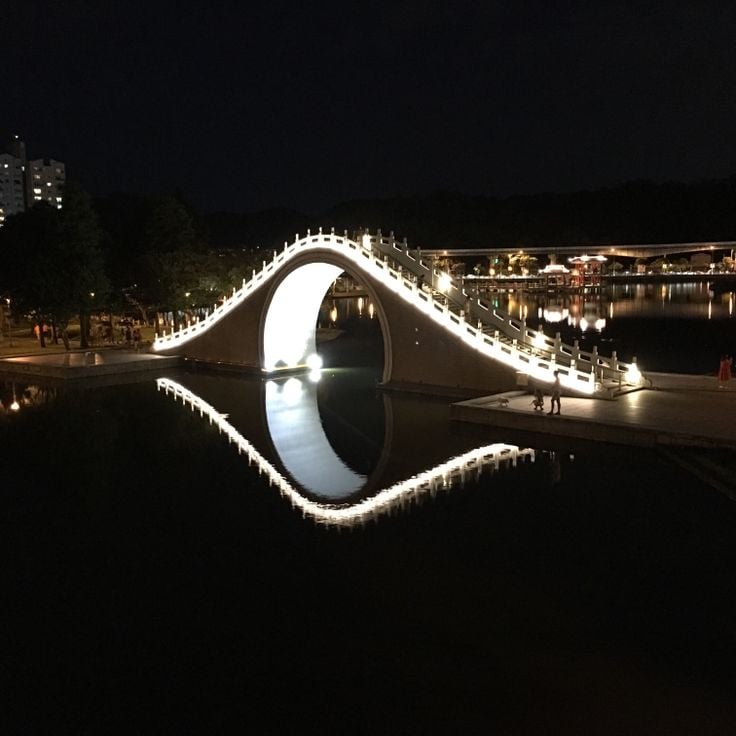
Taipei, Taiwan
This stone bridge reflects in the park's water, forming a perfect circular outline.

Tokyo, Japan
The 18th century garden bridge connects two shores across a narrow pond with water lilies.
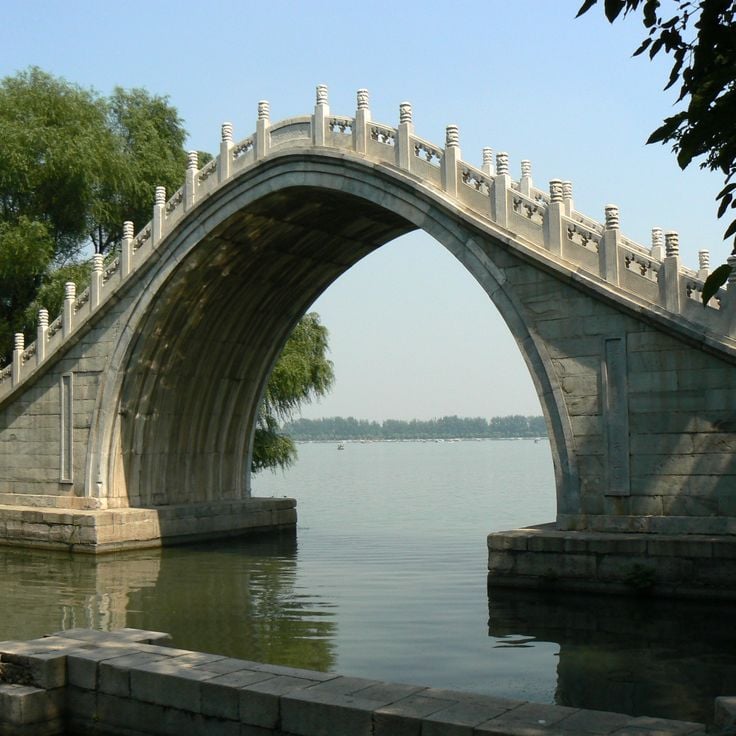
Beijing, China
This bridge in the Summer Palace features a steep arch and displays traditional Chinese architectural elements with stone carvings.
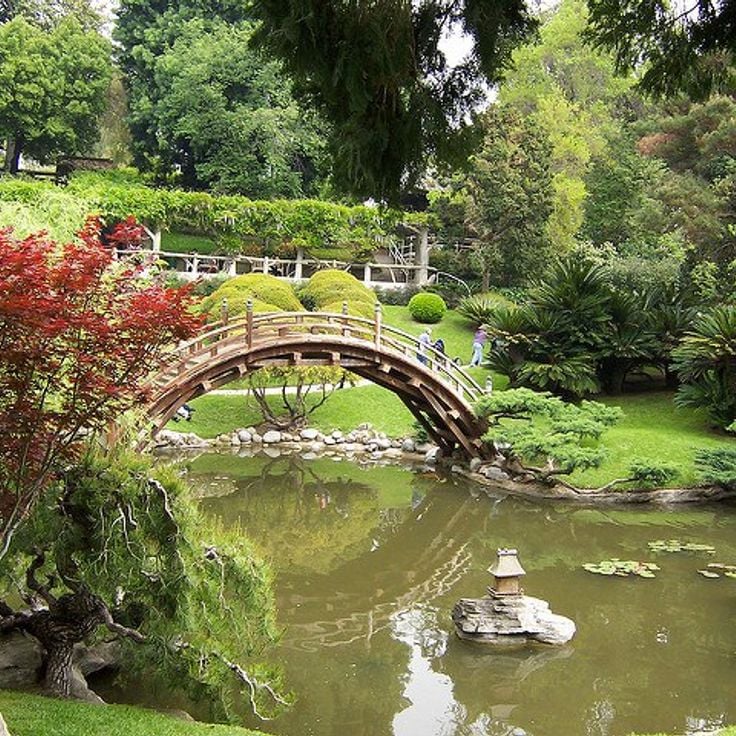
San Marino, USA
The bridge stands in a Chinese garden with a pond, surrounded by bamboo groves and traditional pavilions.

Tokyo, Japan
The red bridge crosses a garden pond and forms a complete circle with its reflection in the water.
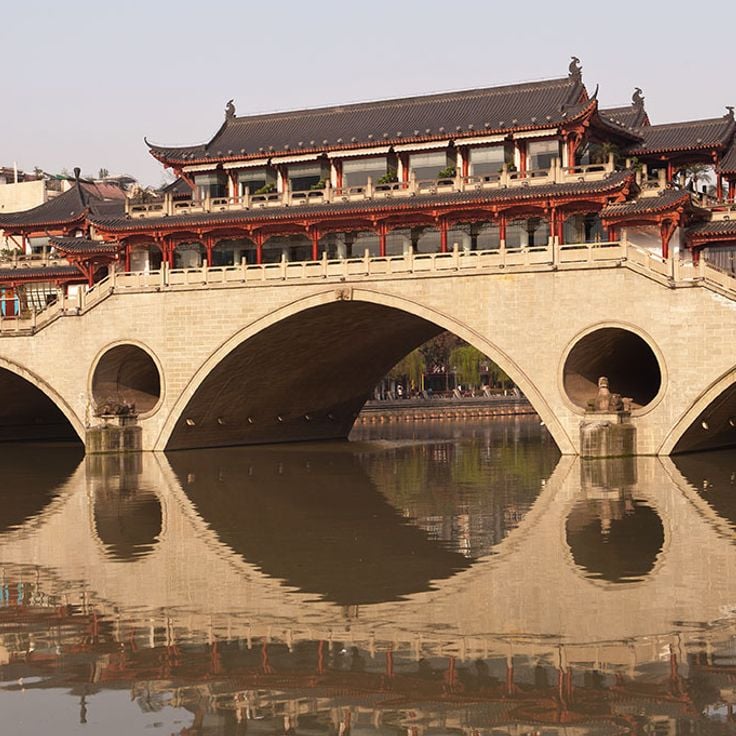
Chengdu, China
The bridge connects teahouses and restaurants along the river and serves as a center for local gastronomy.
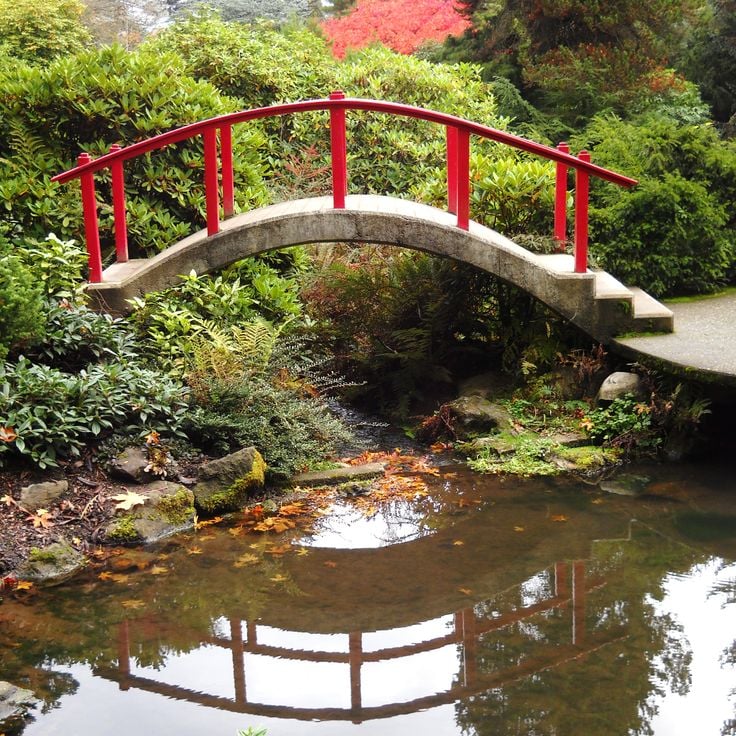
Seattle, USA
This traditional bridge connects two garden areas with a red wooden arch over a small pond.

Virginia, USA
This wooden bridge from 1857 crosses Dunlap Creek with a distinctive arched shape.
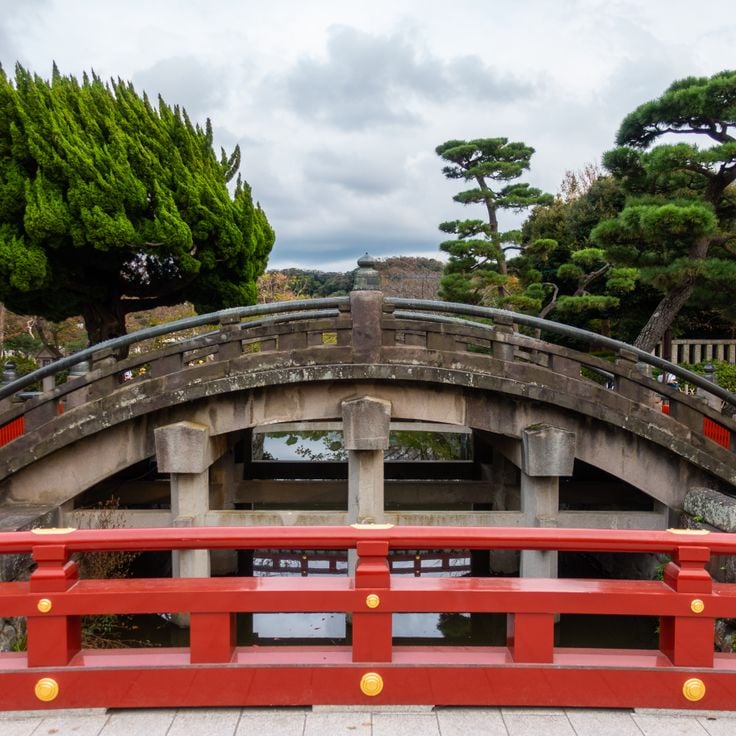
Kanagawa, Japan
The round stone bridge guides visitors across the waterway to the shrine's main entrance.
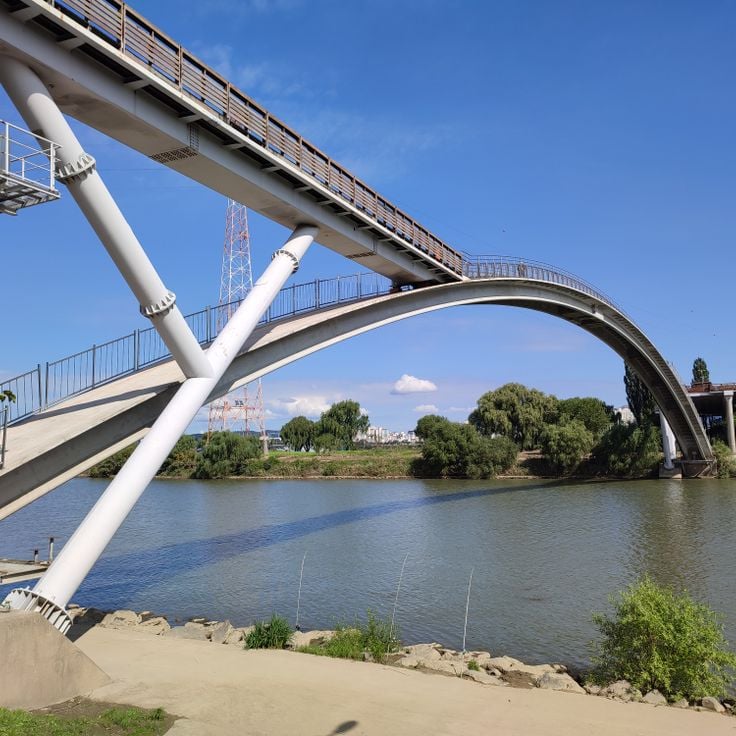
Seoul, South Korea
The curved passage connects the park to the island through a construction of steel and wooden planks.
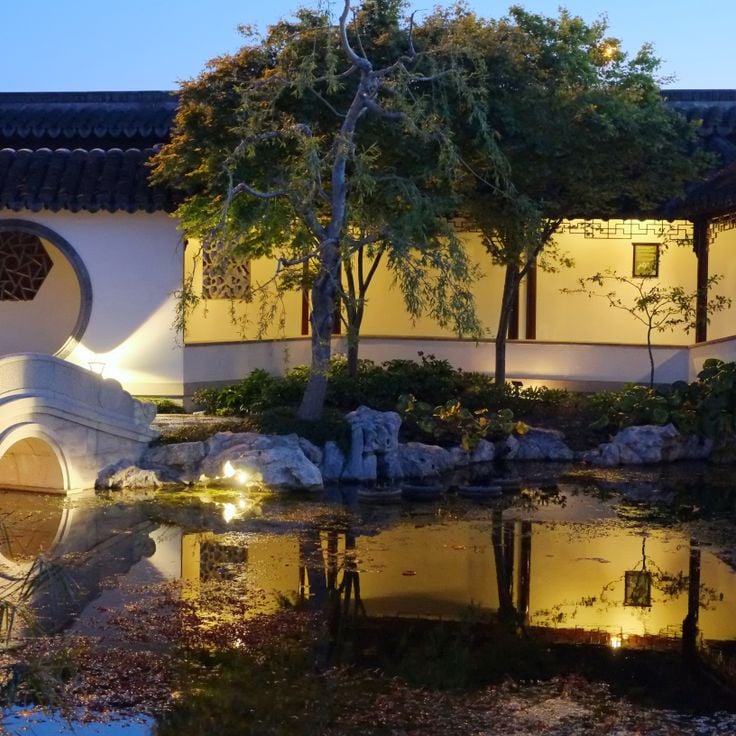
Suzhou, China
This stone bridge from the 18th century connects two garden sections across a narrow canal. The arch reflects in the water.
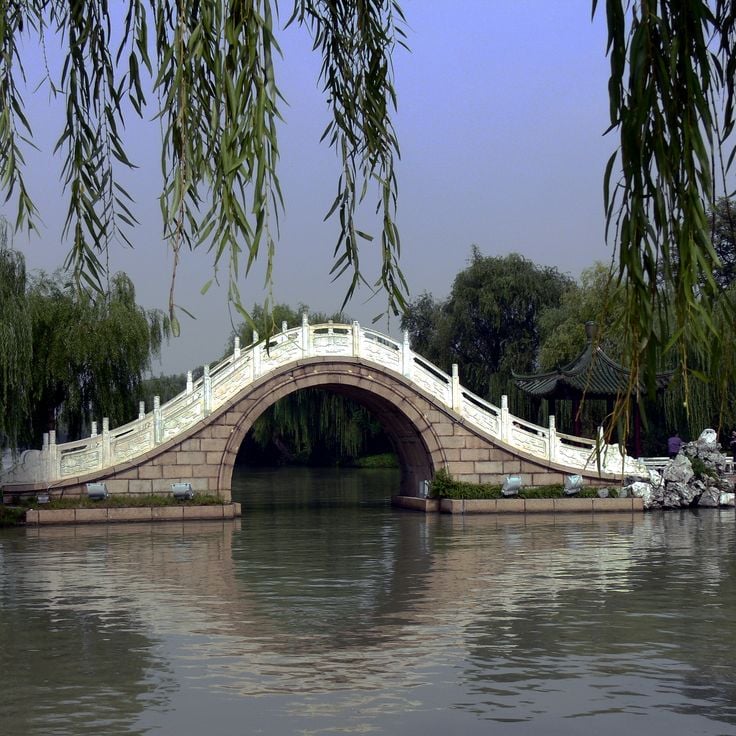
Yangzhou, China
The stone arch of this Ming Dynasty bridge spans a canal in the garden. It measures 24 Chinese feet in length.
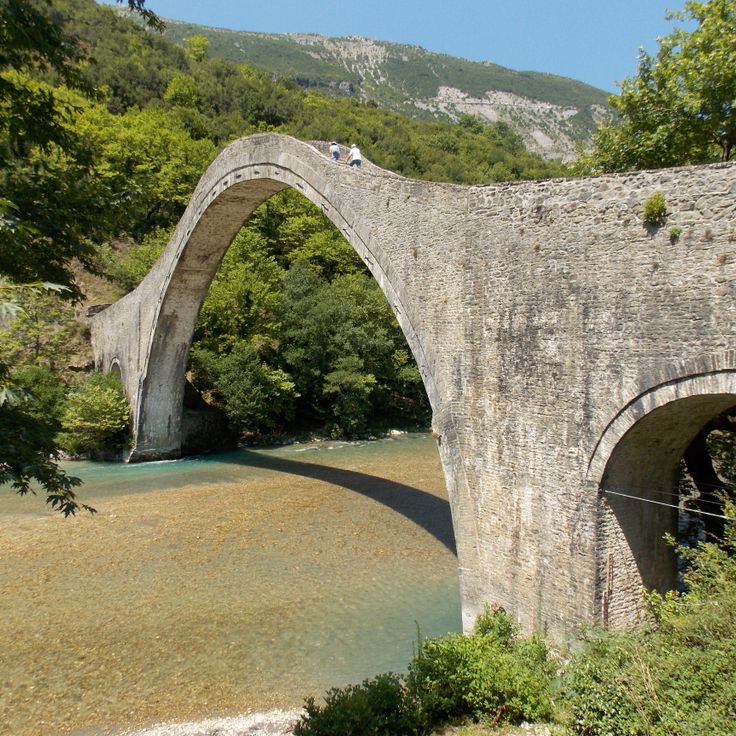
Epirus, Greece
This stone arch bridge from 1866 crosses the Arachthos River. The central arch has a span of 40 meters.
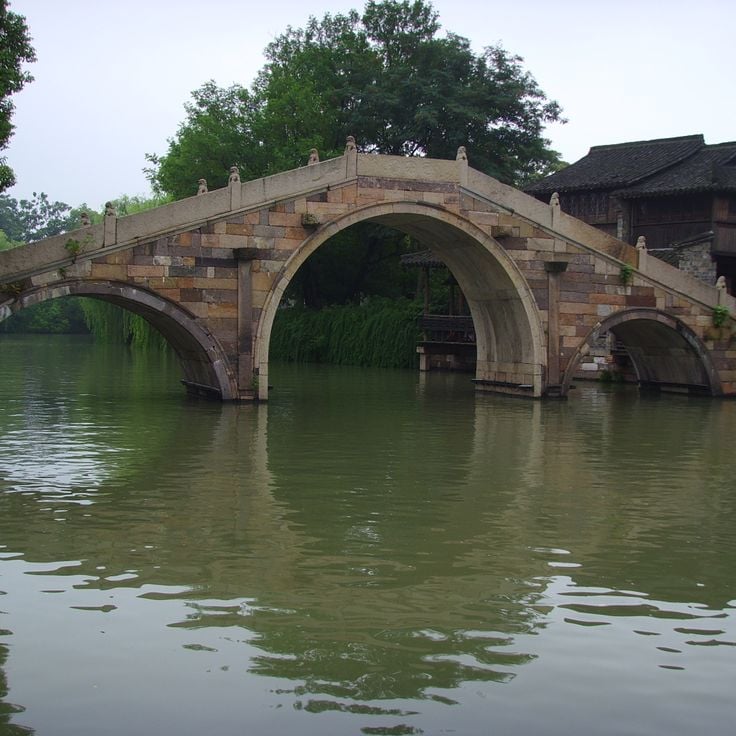
Jiaxing, China
This stone bridge dates from the Qing Dynasty and crosses a water canal. The arch displays typical Chinese construction features.

Toulouse, France
The red bridge spans a pond with koi fish. The Japanese garden is located in the Pierre Baudis complex.
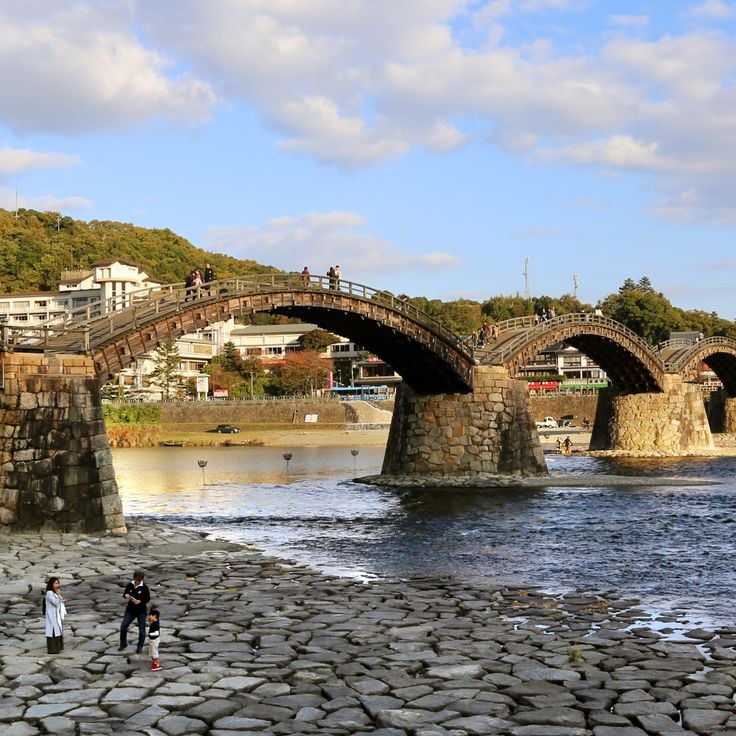
Iwakuni, Japan
The wooden bridge from 1673 consists of five arches spanning the Nishiki River. It was built without using nails.
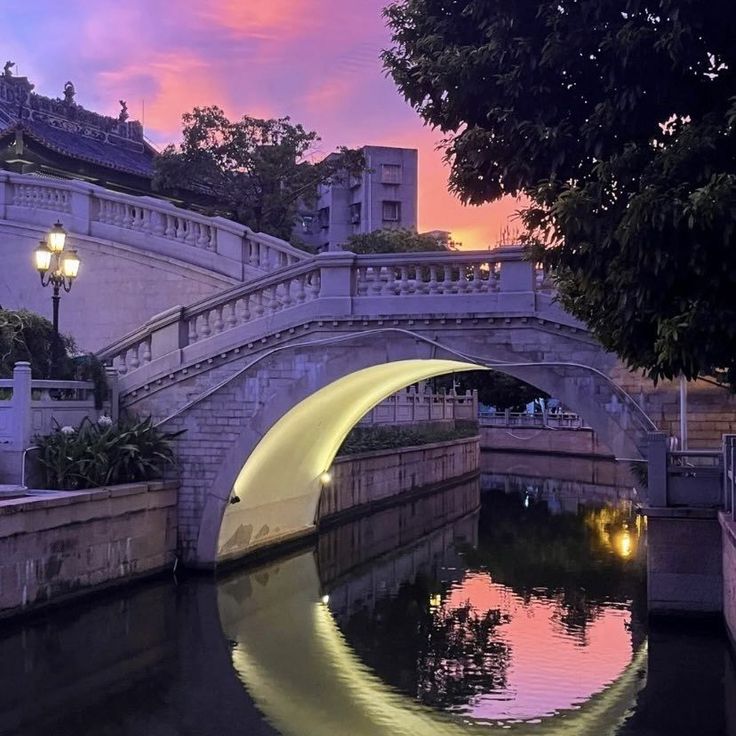
Liwan Qu, Guangdong, China
The stone arch reflects in the water to form a complete circle. The pond contains lotus flowers and water lilies.
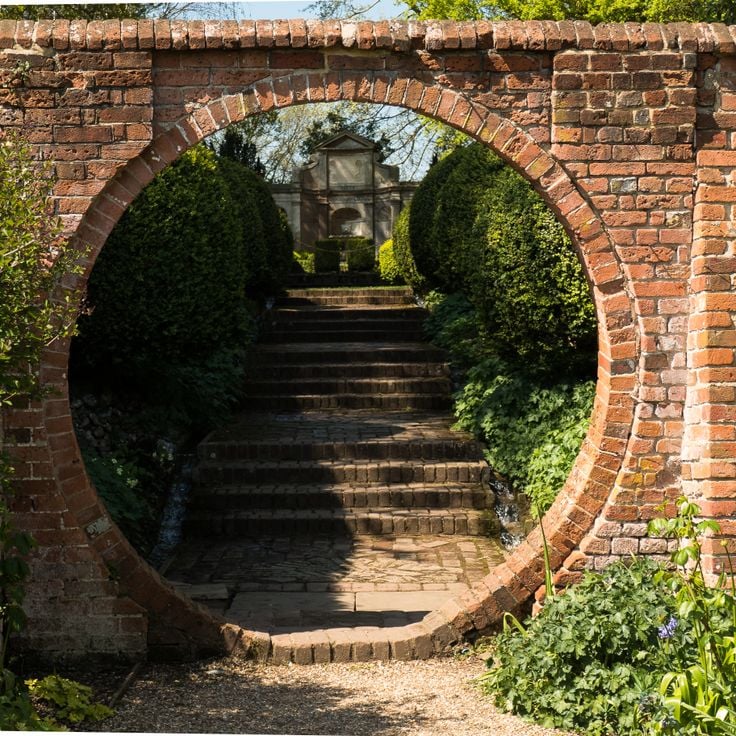
Hampshire, England
The circular red brick gate leads into a formal garden. It forms part of a wall covered with climbing plants.
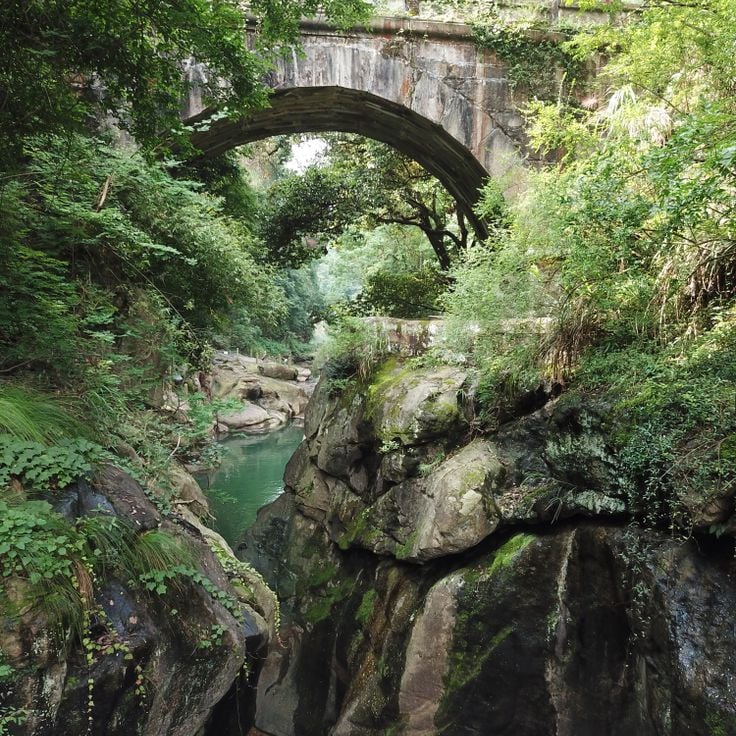
Nanjing, China
The stone bridge reflects in the garden pond and forms a high arc for visitors to cross.
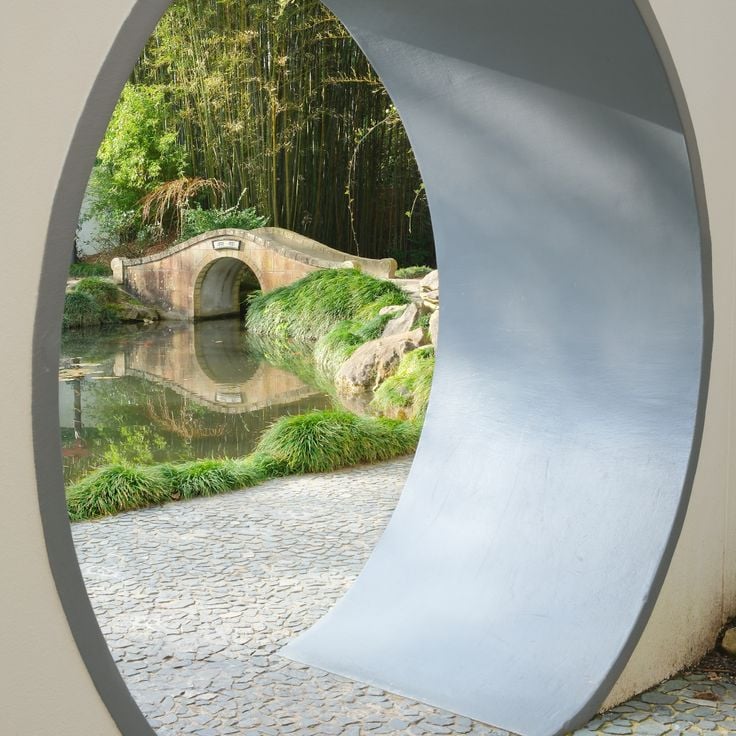
Hamilton, New Zealand
The red wooden bridge connects two shores of the garden pond in Ming Dynasty Chinese style.
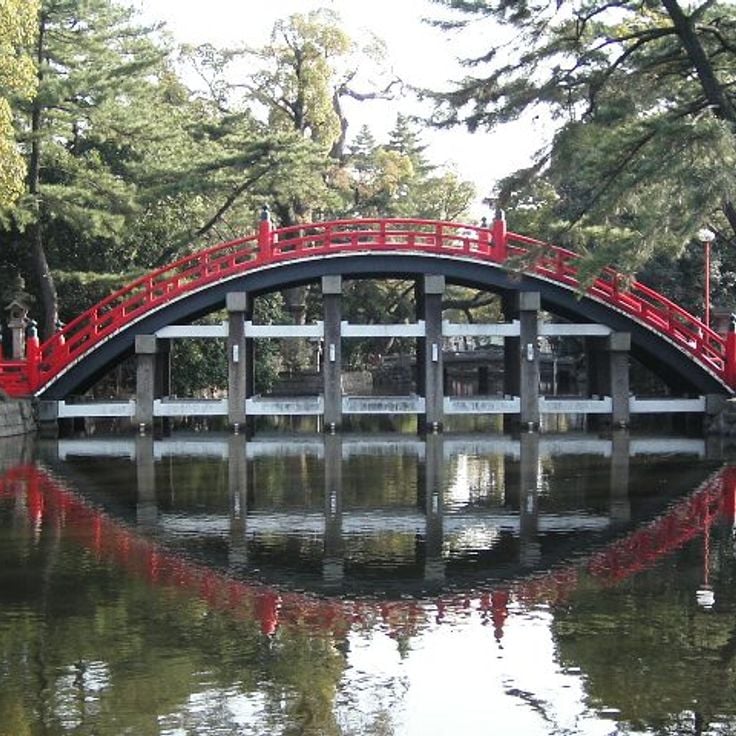
Sumiyoshi, Japan
The curved wooden walkway leads visitors across a pond to the shrine, an example of Japanese garden architecture.

Changsha, Hunan Province
The red steel structure winds over the river and connects multiple levels through intertwined paths.
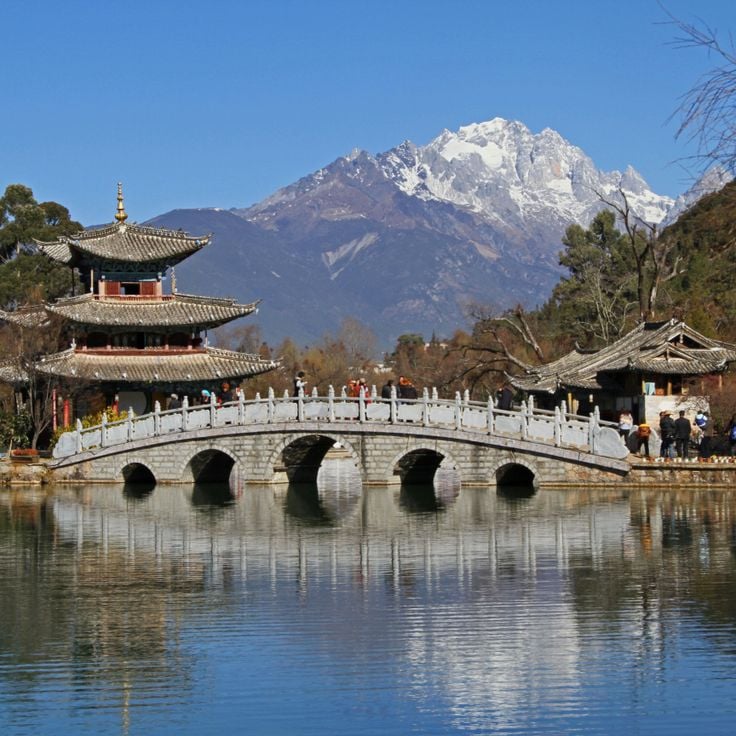
Yunnan, China
The stone bridge features five symmetrical arches and connects two riverbanks across a stream in the southern part of the province.
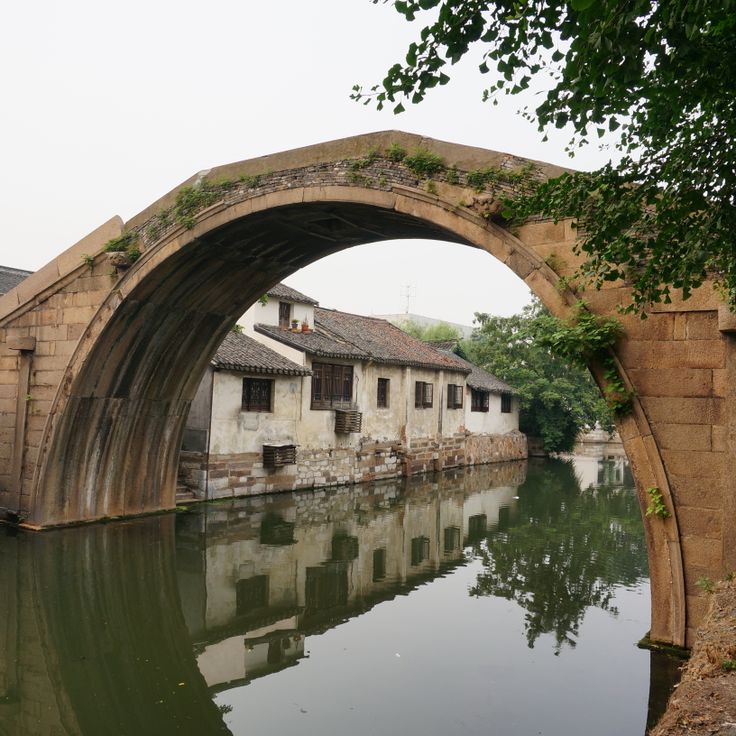
Zhejiang, China
The Ming dynasty stone bridge crosses a canal with a single arch and demonstrates historical construction techniques.